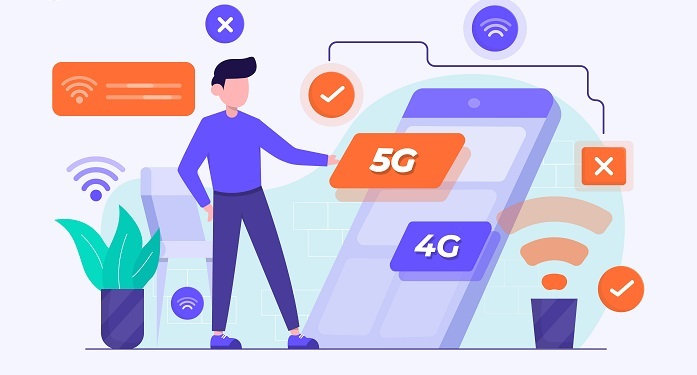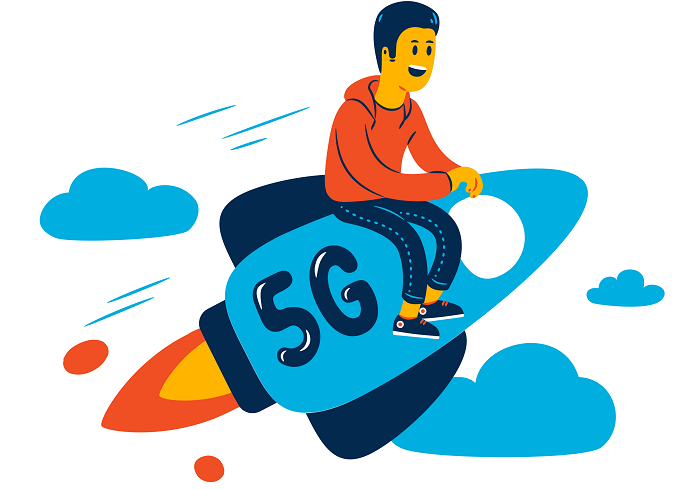
 Data Structure
Data Structure Networking
Networking RDBMS
RDBMS Operating System
Operating System Java
Java MS Excel
MS Excel iOS
iOS HTML
HTML CSS
CSS Android
Android Python
Python C Programming
C Programming C++
C++ C#
C# MongoDB
MongoDB MySQL
MySQL Javascript
Javascript PHP
PHP
- Selected Reading
- UPSC IAS Exams Notes
- Developer's Best Practices
- Questions and Answers
- Effective Resume Writing
- HR Interview Questions
- Computer Glossary
- Who is Who
What is the full form of LTE?
Introduction
Long-Term Evolution (LTE) is the most recent 4G wireless network technology and gives consumers quicker download and upload rates with less latency than other cellular technologies.

In this extensive guide to Long-Term Evolution, we will define LTE, describe how it functions, go over its benefits over competing cellular technologies, go over the different kinds of LTE networks that are currently in use, and offer practical advice for making the most of your connectivity when using an LTE connection.
You will have a better knowledge of how LTE may enhance your internet experience after reading this article.
Technical Features
Some of LTE's most important characteristics are technological in nature. These consist of
Frequency Division Duplexing (FDD) and Time Division Duplexing (TDD) are the two access modalities offered by LTE. Greater frequency reuse and improved spectrum efficiency are possible with both of these modalities.
several Input Multiple Output (MIMO) is a crucial component of LTE technology that increases data throughput by simultaneously utilising several receive and transmit antennas. Users may benefit from better data speeds thanks to this functionality, even under poor signal situations.
LTE uses the beamforming technology to more accurately route signals between base stations and consumer devices. This enhances signal quality and expands coverage, especially in remote places.
Quality of Service (QoS) is a crucial component of LTE that guarantees end customers receive a constant quality of service with no jitter or delay. Additionally, QoS offers enhanced access to high-bandwidth activities like gaming and video streaming.
Evolution
Within the mobile network, LTE enables better average data speeds, more capacity, and decreased latency. With LTE, you can browse the web and send emails more quickly, do more in less time, and generally have a better experience than ever before.
Beyond speed, LTE offers better coverage since it supports more connection types than 4G. This indicates that it can provide you greater coverage within buildings and across rural regions, both of which earlier generations have had difficulty with.
Last but not least, LTE offers scaling possibilities and enhanced capacity that were not feasible with earlier generations of mobile technology. This entails enhanced scalability in the event that demand rises in the future and more durable networks that can withstand record-breaking traffic.
Global Adoption
Within the mobile network, LTE enables better average data speeds, more capacity, and decreased latency. With LTE, you can browse the web and send emails more quickly, do more in less time, and generally have a better experience than ever before.
Beyond speed, LTE offers better coverage since it supports more connection types than 4G. This indicates that it can provide you greater coverage within buildings and across rural regions, both of which earlier generations have had difficulty with.

Last but not least, LTE offers scaling possibilities and enhanced capacity that were not feasible with earlier generations of mobile technology. This entails enhanced scalability in the event that demand rises in the future and more resilient networks that can manage previously unheard-of volumes of traffic at any given time.
Since its introduction in 2008, LTE has been the most widely adopted cellular technology globally. The current global LTE penetration rate is 81%, according to OpenSignal, an independent source of data on mobile networks.
LTE has a straightforward idea: it transmits and receives data to and from cell towers using high-frequency radio waves. Additionally, because to its widespread use, it is simple to locate cell carriers that provide LTE connections everywhere in the globe. Verizon, AT&T, T-Mobile, and Sprint, the country's four biggest carriers, have all agreed to launch 5G networks by 2020.
Additionally, customers may verify their connection via numerous access points from a single device without the need for extra goods or services thanks to fixed and portfolio solutions offered by a variety of suppliers. It's reasonable to say that LTE has established itself as a solid option for everyone searching for cellular coverage all around the world.
Conclusion
In conclusion, the way people access the internet has radically changed as a result of the long-term evolution (LTE) of mobile communications. LTE has emerged as the standard for contemporary wireless communication thanks to its higher signal strength, quicker speeds, better dependability, reduced latency, and improved online surfing experience. LTE will continue to lead the development of wireless technology for years to come as new and cutting-edge features and technologies are implemented. In order to maximise the use of your data plan and experience the maximum level of online quality, it's critical to remain knowledgeable about the capabilities and performance of the network you're using.
FAQs
Q1. Will 5G take the place of LTE?
LTE will continue to coexist and play a crucial role in the overall mobile network architecture even as 5G networks are being built. LTE will continue to be used for a long time since it offers vast coverage and supports devices that are not 5G compatible.
Q2. Can LTE be used to connect to the internet at home?
In places with sparse or nonexistent wired infrastructure, LTE can be utilised as a wired broadband substitute for home internet access. Fixed wireless access (FWA), often known as LTE-based home internet services, are provided by mobile network carriers.
Q3. Can voice calls be made via LTE?
Yes, voice calls made over LTE utilising the Voice over LTE (VoLTE) technology are supported. In comparison to conventional phone networks, it offers high-quality voice calls over LTE networks, offering better clarity and quicker call setup times.

